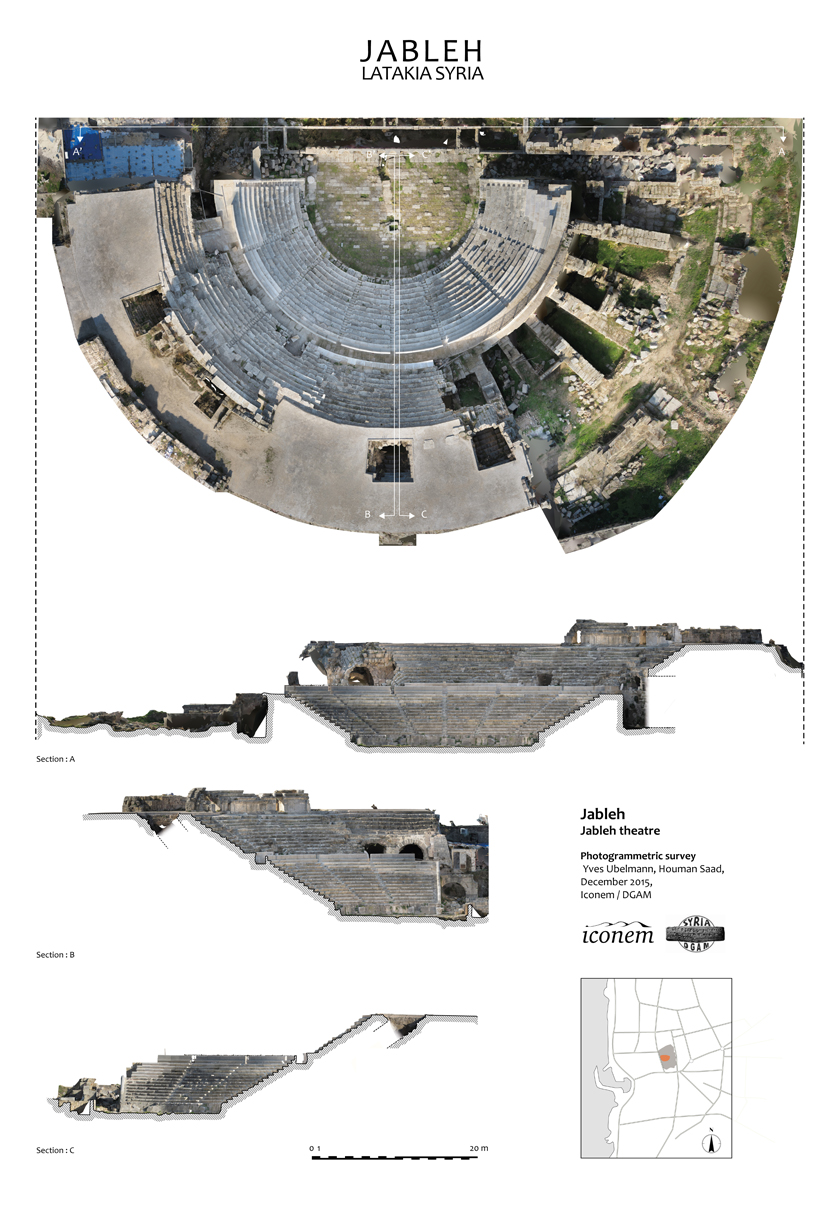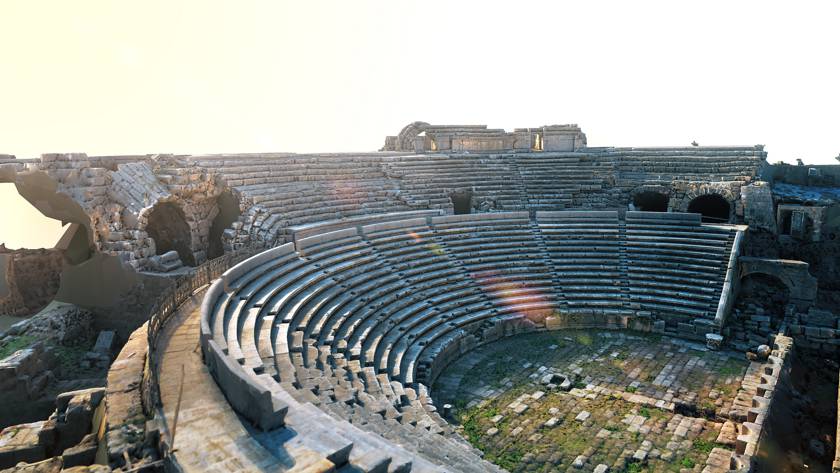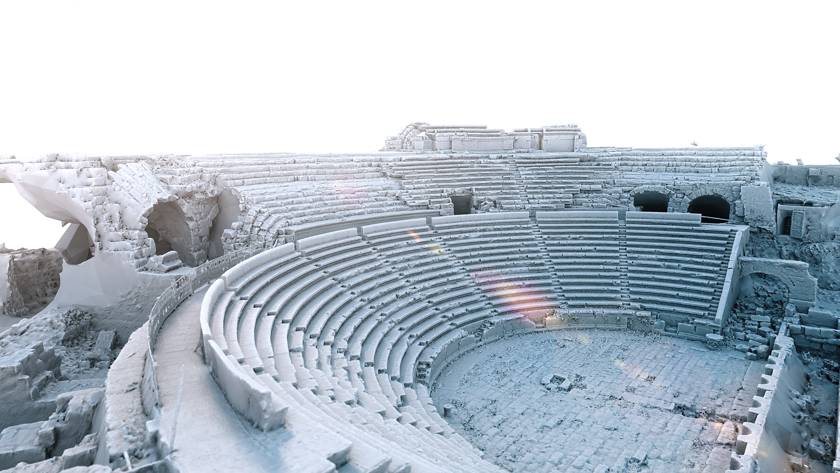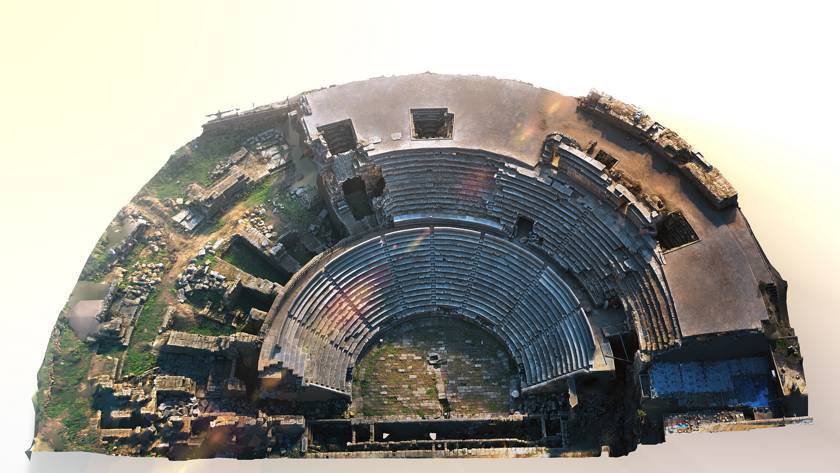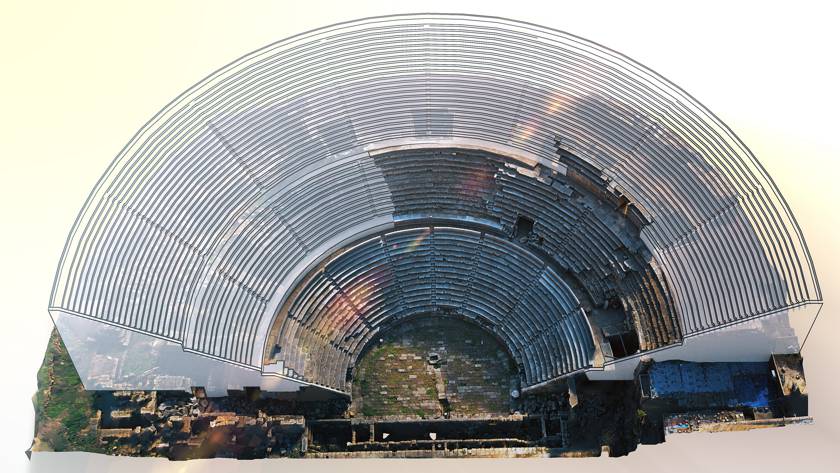Some authors claim that the emperor Justinianus, 527-565 AD (Jacquot 1927), built the theatre, others that it was built by the emperor Septimus Severus, 193-211 AD. From the architectural details and from the first results of the excavations they considered that the theatre was probably built during the Severan dynasty, 193-235 AD, probably in the first half of the 3rd century AD.
Between 1098-1285 crusaders occupied the city and the theatre was transformed into a fortification, like the Bosra theatre in south of Syria. Many authors refer to this transformation as G.Rey after his trip in 1859, and there is also some archaeological evidence to back this up. Many travellers visited Jebleh – Arabic travellers such as Yakut al-hamoi in 1225 and Ibn Battuta in the 14th century, and especially European travellers like H. Maundrell in 1698, R. Pococke and Louis de Clercq in1881, and Max Van Berchemand and Edmond Fatio in 1895.
The theatre, located in the centre of the town of Jebleh, is built on flat land and faces north. The structure is built with blocks of local sandy limestone. The theatre is a complex system of walls, arches, vaulted spaces, and access is gained through seventeen huge gates. The construction forms of the cavea are characterised by the intersection of the semi-circular barrel-vaulted galleries and the radial walls, which are also semi-circular.
The theatre is circular in shape, with a diameter of about 90 meters, and has three floors, It contains 35 rows of stone seats, and it seats about eight thousand spectators.
Source: T Patricio & T Stevens, The Roman theatre of Jebleh in Syria, 2003.
E Frézouls, Les théâtres romains de Syrie, AAAS, 1953.
